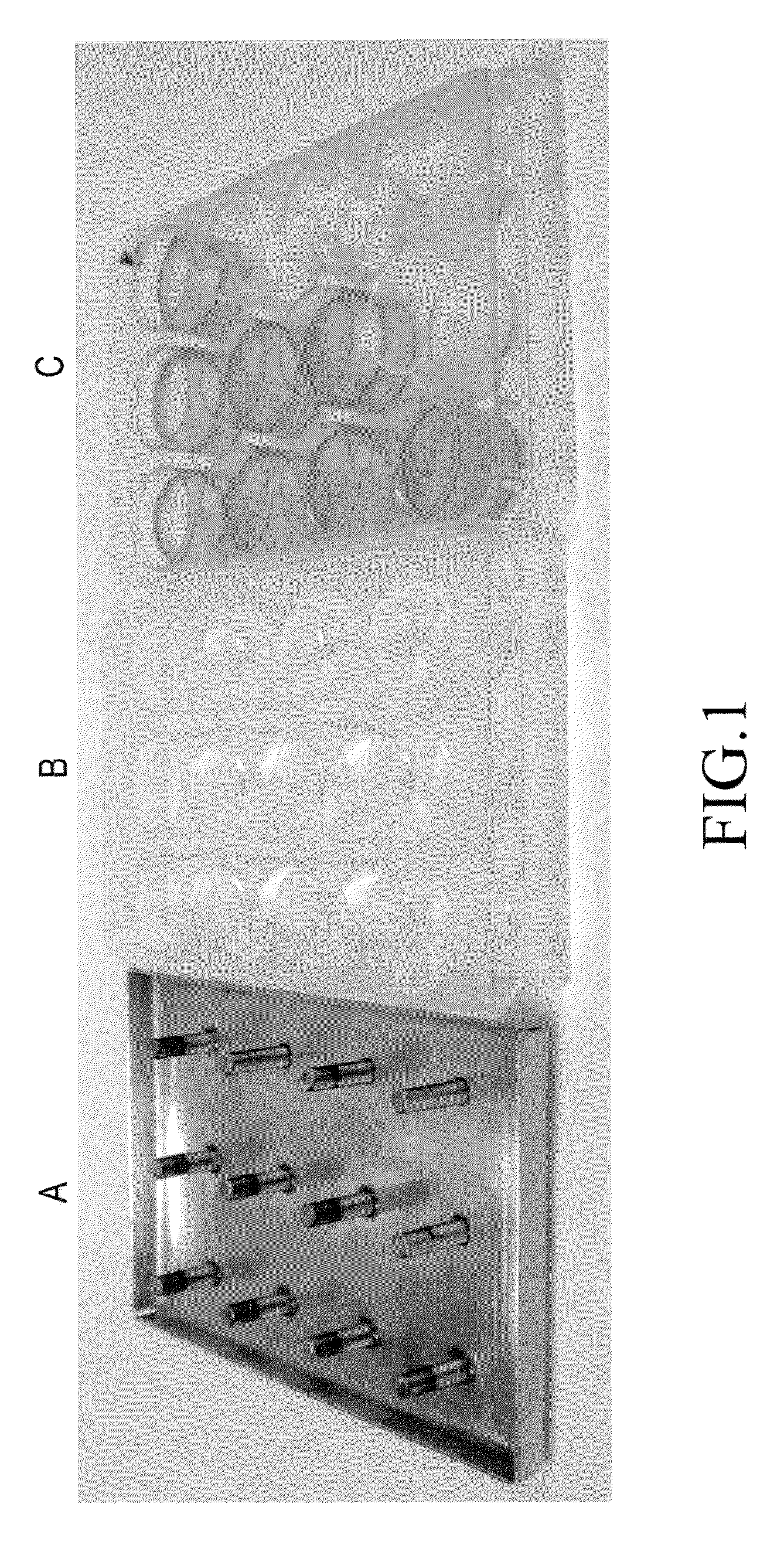Method for monitoring the presence of biofilmforming microorganisms in paper industry
a biofilm and microorganism technology, applied in the field of monitoring the presence of biofilm and microorganisms in paper and board making industry, can solve the problems of biofilms, i.e. slime layers, severe process disturbances, and rip off from the surfa
- Summary
- Abstract
- Description
- Claims
- Application Information
AI Technical Summary
Benefits of technology
Problems solved by technology
Method used
Image
Examples
example
[0063]In this experiment one embodiment of the sampler device of the invention is used to illustrate the method of the invention for determining the effect of several anti-biofilm agents in inactivation of biofilms formed in a paper machine.
[0064]In this embodiment the sampler device comprises 12 stainless steel pegs fixed from one end on a stainless steel lid. The lid with the pegs is presented in FIG. 1 together with a treatment plate with 12 wells adapted to receive the pegs when the lid is placed on the plate. Suitably the lid was designed to be complementary with the commercially available 12-well polystyrene plates.
[0065]Three sampler lids are immersed in the clear filtrate silo of a neutral fine paper machine and allowed to hang immersed in said filtrate at the temperature of 52° C. of the process water, for 68 h. Then the samplers are removed, rinsed once with sterilized tap water, and each lid is placed on a 12-well treatment plate so that the pegs with biofilms formed in s...
PUM
| Property | Measurement | Unit |
|---|---|---|
| temperature | aaaaa | aaaaa |
| temperature | aaaaa | aaaaa |
| temperatures | aaaaa | aaaaa |
Abstract
Description
Claims
Application Information
 Login to View More
Login to View More - R&D
- Intellectual Property
- Life Sciences
- Materials
- Tech Scout
- Unparalleled Data Quality
- Higher Quality Content
- 60% Fewer Hallucinations
Browse by: Latest US Patents, China's latest patents, Technical Efficacy Thesaurus, Application Domain, Technology Topic, Popular Technical Reports.
© 2025 PatSnap. All rights reserved.Legal|Privacy policy|Modern Slavery Act Transparency Statement|Sitemap|About US| Contact US: help@patsnap.com

